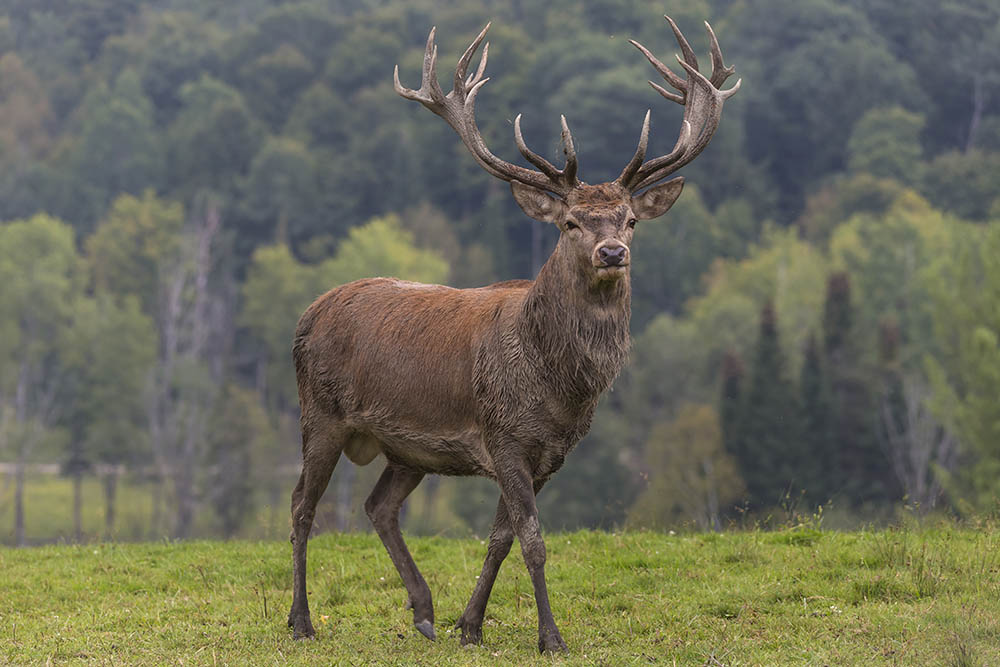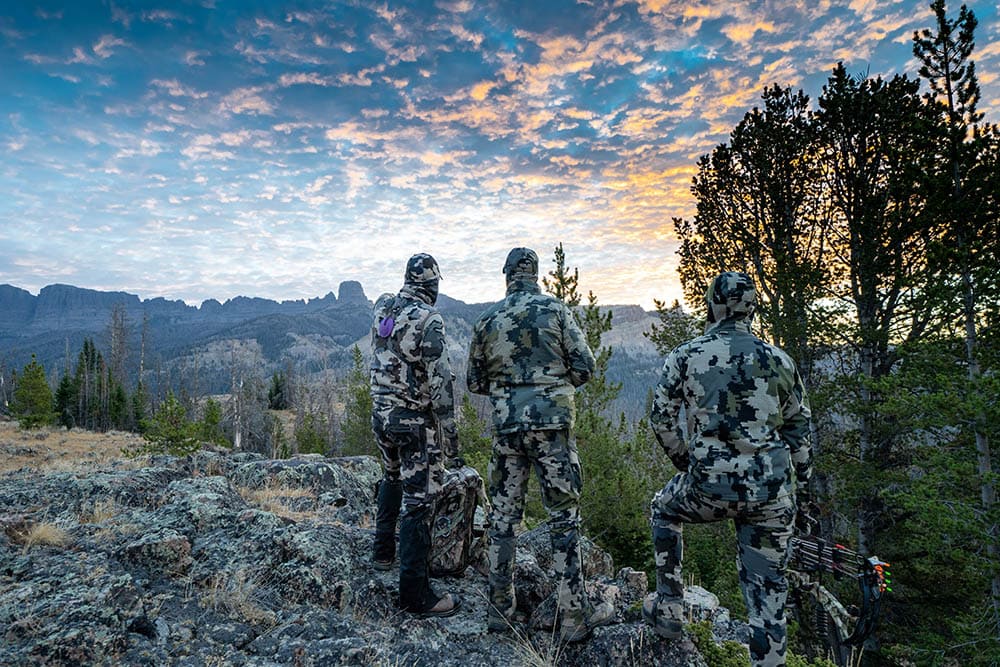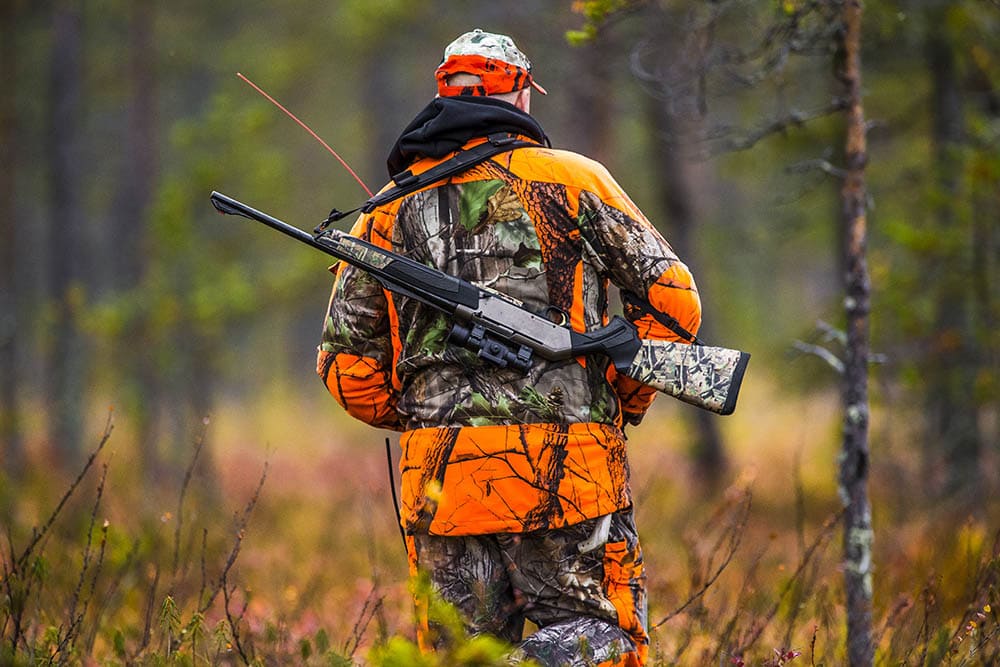How to Hunt Elk in Colorado – Basic Tips & Tricks
Last Updated on

Outdoor recreation is a popular way to escape the pressures of everyday life. About 15 million people participated in hunting in 2020. It’s ironic that any stigma exists with it, considering that eating meat ultimately made us humans by helping to increase our brain size and intelligence. However, being able to make personal choices is one of the best parts of being a human today. Nevertheless, hunting remains an enjoyable pastime that continues to challenge its participants.
Many people progress through the circuit of small animals to larger species, such as deer. Taking the leap to big game like moose, elk, or bear tests your skills and makes the sport more challenging. Your prey’s intelligence makes a difference. However, it’s also often a factor of the conditions that take it to the next level. Hunters wanting something even more difficult won’t find a better opportunity than going after elk in Colorado.

How Does It Work?
It’s essential to understand how government agencies manage species like elk. You’ll likely hear a lot of misinformation about the role of state Departments of Natural Resources (DNR). The DNR must balance the needs of the hunters with other stakeholders, including landowners, and the survival of the species.
It’s a difficult task. Game managers want to ensure a healthy population that will thrive and provide a hunting experience for participants. At the same time, they want to make sure that it stays genetically viable. Managers also want to avoid food shortages that would lead game species to create conflicts with landowners by feeding on agricultural crops or ornamental plants. At the same time, some hunters want to take as much as they want.
It’s an uncomfortable position for anyone in charge of game management.
Colorado isn’t different from many other states. There are rules for residents and out-of-state hunters. After all, the former pays taxes to fund this sport. Incomers do not. It makes sense that residents should get first dibs. However, other factors come into play. Many states have limits on hunting some game species. The percentage of the population that hunters can take is often lower than predators with their long lives and survival rates.

What Are the Different Seasons of Elk Hunting?
Colorado offers four types of elk-hunting licenses that include:
- Qualifying licenses
- Limited licenses
- Leftover limited licenses
- Over-the-counter licenses
Each one has its rules and regulations. This system opens up opportunities for all hunters. However, it’s not without its controversies. Some people may resent a draw or lottery system, considering it their right to hunt if they choose. However, it’s not a political consideration but an ecological one. The goal is to ensure a healthy population to make hunting possible.
Colorado has six hunting seasons, which also have their rules. They include:
- Archery
- Muzzleloader
- First Rifle
- Second Rifle
- Third Rifle
- Fourth Rifle
Except for the first two, none overlap. They also vary on whether a draw is part of the process. Unsurprisingly, the muzzleloader, first rifle, and fourth rife are lottery based. Bear in mind that it may take years before you score a chance. However, you’re more likely—but not guaranteed—a trophy animal or even a kill.

Where Can You Hunt?
You can hunt in designated places on public land. It’s a factor of the population and its stability that determine its location. Many things can affect the elks’ viability that is part of its game management. The hunters have an edge because they are often pests. That means you may find that it’s not an issue to go on private land. However, you must secure permission before you trespass and risk fines.
Advantages of Elk Hunting
Elk hunting benefits the environment. These animals are relatively long-lived, at 20 years in the wild. These herbivores can do a lot of damage during that time. Hunting keeps it under control, much to the relief of landowners. It also helps the animals. Sadly, people killed off many predators in the early 20th century in the erroneous belief that they harmed the environment. The opposite is true.
It’s imperative to remember that elks and prey species evolved with predators. The latter keep their number in check. Without animals like wolves and coyotes, herbivores like elk would tap their ranges of food. Predator and prey populations exist in cyclic relationships. The same thing doesn’t exist with herbivores and their food sources. Starvation and disease are the inevitable results.

Disadvantages of Elk Hunting
Elk hunting isn’t easy, which is one of the things that attract some people to the source. These animals live in challenging environments. They aren’t like the deer eating your hostas in your backyard. They are often more wary of humans, making hunting more difficult. However, that’s what drives some people to take up this pastime.
The other consideration is the elk’s habitat. It’s not a walk in the park. Instead, you’ll find yourself in hilly and rough terrain. Consequently, you must have the physical stamina and strength to navigate these places. You must also consider the price of your success. Bulls can weigh 700 pounds, with some pushing 900 pounds. You’ll have to field dress them and haul them down the mountains. This prep doesn’t make them seem any less heavy.

Frequently Asked Questions (FAQs)
Why should I consider Colorado for elk hunting?
Colorado has the largest population of elks, with over half of the state providing excellent habitat. Idaho is the only state to exceed its coverage of appropriate rangeland. Ironically, its historical range extended across the entire country. That makes Colorado something of a mecca for elk hunters. The state manages the herd well, making for an enjoyable experience.
How can I increase my chances for success?
It’s essential to plan your trip. Do your research to figure out where the elk are most abundant in the areas you want to hunt. Elk is a desirable big game species. That makes them warier. Therefore, you must take it slow and plan for an all-day excursion. This animal will challenge you with its intelligence.

What else do I need to know?
The Colorado Hunting Atlas can give you a competitive edge by knowing where the animals are. Yes, others are using it, too, but it can help you scout out several possible hunting spots to increase your chances of success. We suggest monitoring the weather since the conditions can change rapidly, making traversing some places more challenging.

Conclusion
Elk hunting is the next step for experienced enthusiasts. If you’ve been used to roaming everyday ecosystems, the ranges of this animal will likely kick it up a notch. It’ll demand more out of you physically and mentally. That’s perhaps why so many people find it so rewarding. If you succeed, you will have earned it. You can also have the satisfaction of helping to keep the elk population healthy while playing the role of the predator.
Featured Image Credit: Josef Pittner, Shutterstock
Table of Contents
About the Author Chris Dinesen Rogers
Chris has been writing since 2009 on a variety of topics. Her motto with all of her writing is “science-based writing nurtured by education and critical thinking.” Chris specializes in science topics and has a special love for health and environmental topics, and animals of all shapes and sizes.
Related Articles:
How to Collimate Binoculars: 9 Expert Tips
How to Clean a Rifle Scope: 8 Expert Tips
How to Choose Binoculars for Bird Watching: 10 Expert Tips
How to Clean a Refractor Telescope: Step-by-Step Guide
How to Clean a Telescope Eyepiece: Step-by-Step Guide
Monocular vs Telescope: Differences Explained (With Pictures)
What Is a Monocular Used For? 8 Common Functions
How to Clean a Telescope Mirror: 8 Expert Tips
